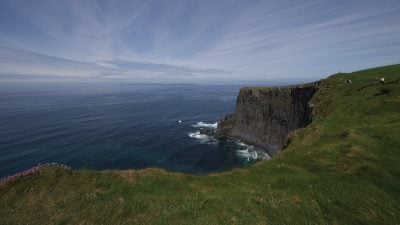Home / UK & Europe / First Stop on Your Denmark Vac…
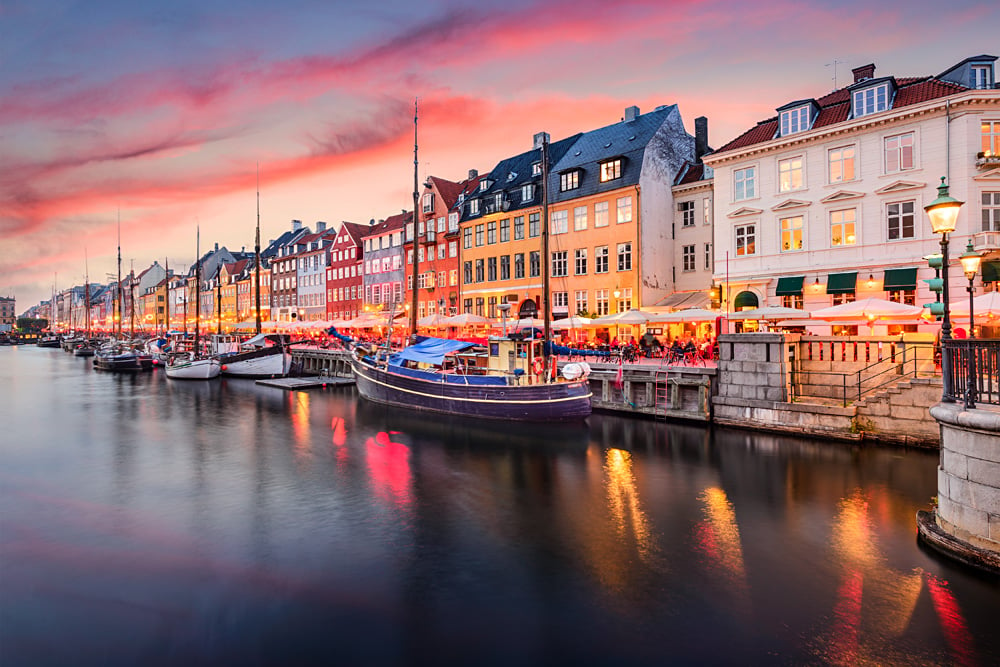
First Stop on Your Denmark Vacation… Wonderful, Wonderful Copenhagen
“Wonderful, wonderful Copenhagen…” As this popular song from the film, Hans Christian Andersen, starts, you will definitely find Copenhagen to be wonderful and also well worth spending time in on your Denmark vacation.
On any visit to Copenhagen, I am reminded somewhat of Amsterdam. It could be the canals, the bicycles, the world-famous beers. However, Copenhagen has many aspects and attractions which differ enormously from Amsterdam, which you will find on a visit here. Let’s explore this wonderful city.
The Little Mermaid
I grew up reading and listening to stories written by Hans Christian Andersen. The one that I distinctly remember was The Little Mermaid, a fairytale about a mermaid who lived under the sea and came to the surface to save a handsome prince from drowning in a shipwreck. You can check out the rest of the story, but in memory of this tale, there is a bronze statue of the Little Mermaid perched on a rock in Copenhagen’s harbour. In fact, it is actually the official emblem of Copenhagen. Spoiler alert – it is not that imposing, I think because of its size. If a fan of Hans Christian Andersen, you might like a visit to the grave of this author which can be found in the Assistens Cemetery along with burial sites of other famous celebrities.
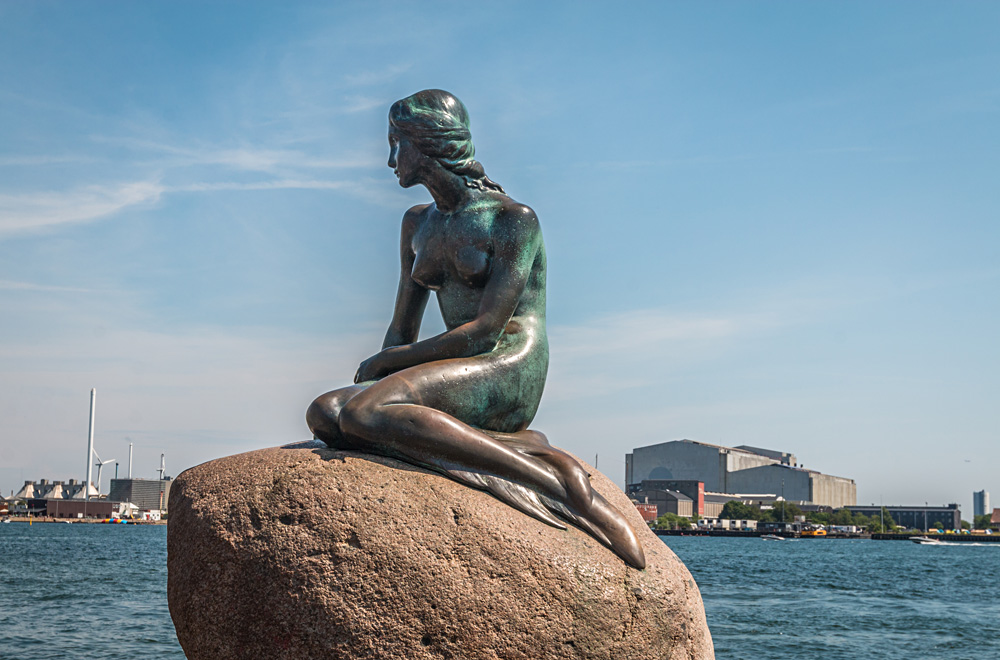
Copenhagen’s Canals
I mentioned canals. They are not as plentiful as in Amsterdam but they are an integral part of the city and add greatly to the character of Copenhagen. The best known canal is Nyhavn, which extends from the harbour into the heart of the city. This very attractive canal is popular not only with visitors on their Denmark vacation, but also with locals. As you stroll along Nyhavn, you can see on one side of the canal, brightly coloured 17th and 18th Century gabled townhouses. Number 67 Nyhavn is the house where Hans Christian Andersen lived at one time. On the other side are a whole host of cafes, restaurants, and bars. In the summer, it is a very lively place. You can select an establishment, perhaps sit outside and then watch the world go by while enjoying the beverage of your choice. From Nyhavn, you can take a 1 hour canal cruise. Another starting point for canal cruises is Gammel Strand on the harbour.
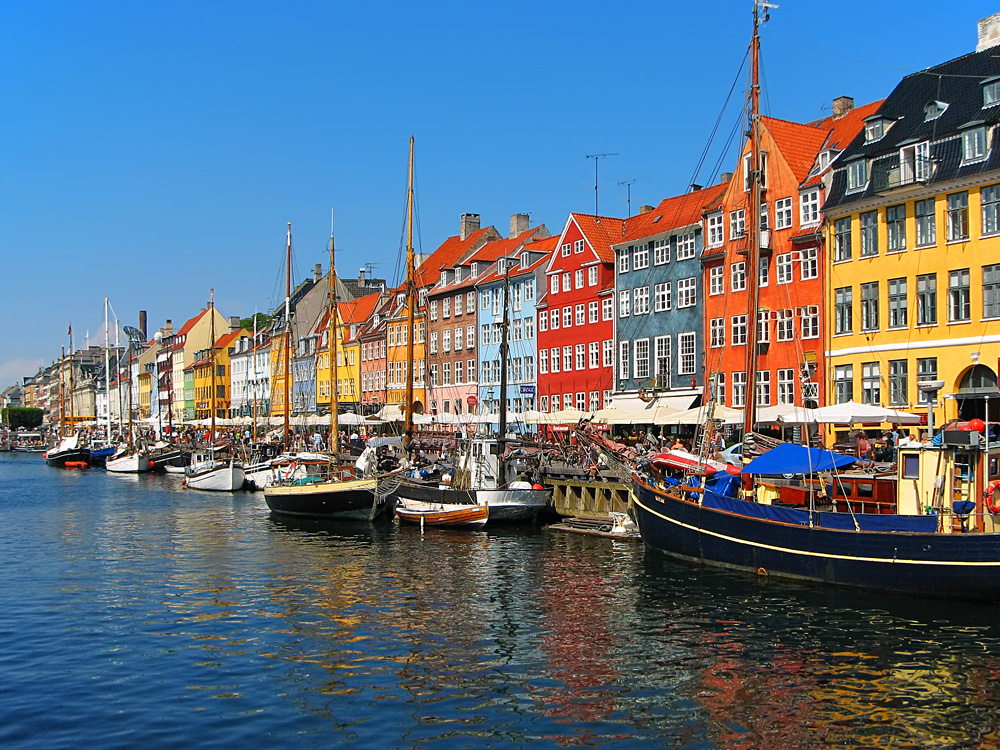
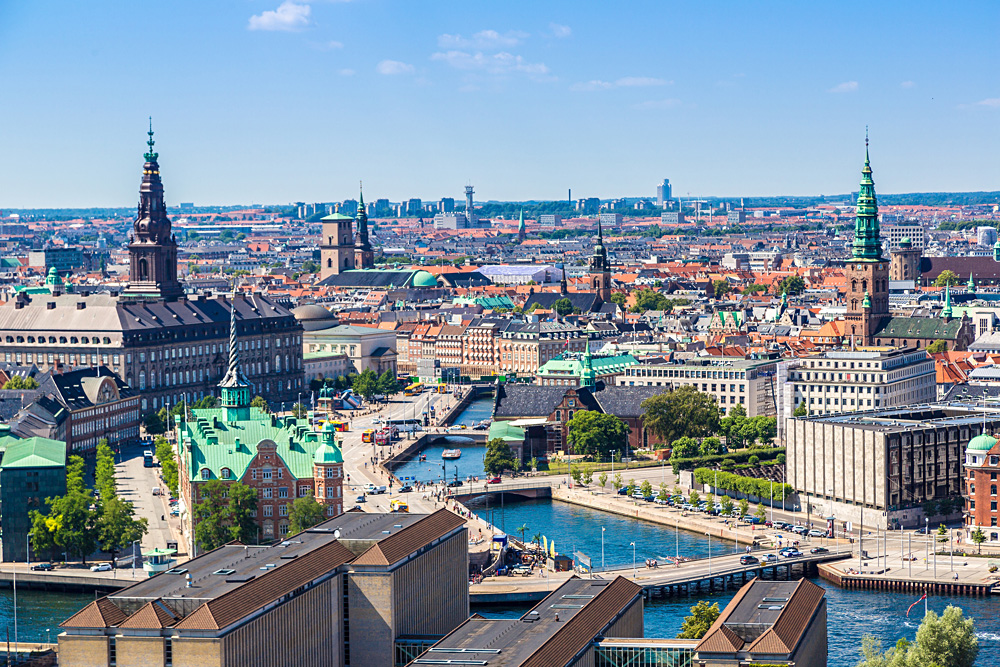
The Stroget
It wouldn’t be long before you stumbled across the Stroget which is, in many ways, the heart of the city. This is a busy 1.1 kilometre/ 0.7 mile long pedestrian street in the principal shopping district, offering merchandise from budget-friendly to world class designer stores. Make sure you head down some of the side streets for not only more stores but quieter neighbourhoods where you can visit local churches, stop for a coffee at one of the cafes or just explore.
Tivoli Gardens
The Tivoli Gardens are possibly as well-known as the Little Mermaid. It is a combination of amusement park and pleasure garden, first opened in 1843, and offers more than 20 attractions including a roller coaster, carousels, pantomime, puppet and open-air theatres, plus numerous restaurants and cafes. There are also flower gardens and a Moorish-styled concert hall, illuminated at night.
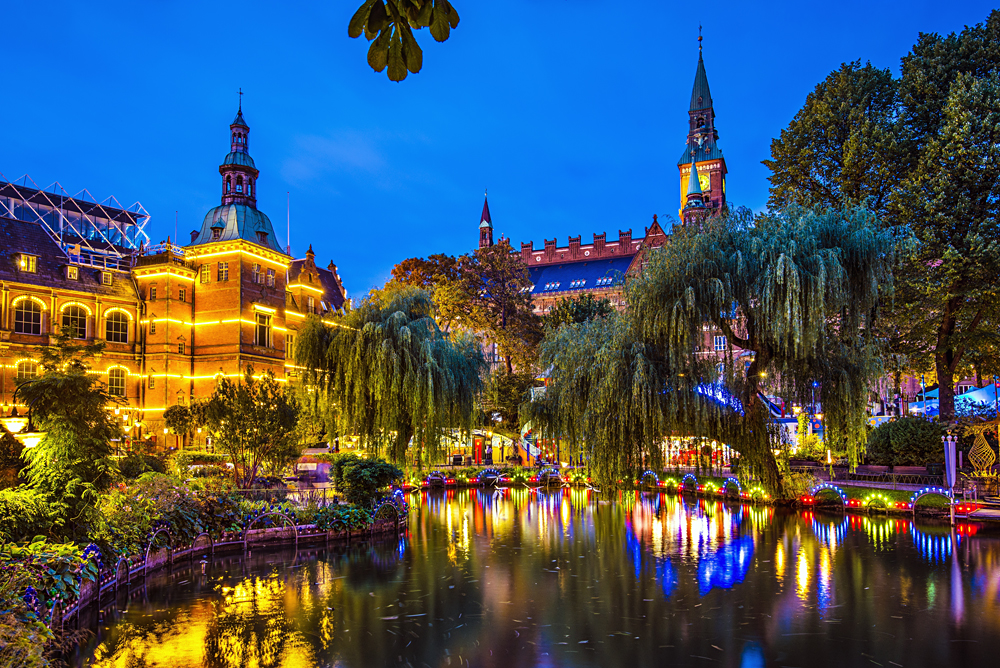
Castles, Palaces and Towers
Christiansborg Palace
The 800-year old Christiansborg Palace, on the tiny island of Slotsholmen in the centre of the city, is the Danish seat of government, the office of the Prime Minister and the Supreme Court of Denmark, all rolled into one huge building. It is the only building in the world that houses all three of a country’s branches of government. If you happened to watch the excellent Danish tv show Borgen, this took place here. It is open to the public and is one of the premier tourist sites visited in Copenhagen. Parts of the palace are used by the Royal Family for functions and special events and you can visit the Royal Reception Rooms, the Tower Room, and the Oval Throne Room. The Great Hall is the most imposing part of the palace which seats 400 guests and is used for banquets, state dinners, and receptions. It is also where you will find the exquisite Queen’s tapestries which depict 1000 years of Danish history. The Christiansborg Palace Chapel is part of the palace and is used for religious ceremonies for members of the Danish Royal Family including baptisms, confirmations, and official lying in state.

Rosenborg Castle
Also in the centre of the city is Rosenborg Castle, a beautiful historic building which dates back to the early 17th century. It contains some of Denmark’s greatest royal art treasures and the crown jewels. Inside are coronation thrones and tapestries which depict battles between Denmark and Sweden. You can also visit the King’s private writing cabinet. There is a special collection of fine Venetian glassware plus there are portraits of several members of past royalty. The Rosenborg Castle Garden is the country’s oldest royal garden and is a popular venue for the people of Copenhagen. Next to the castle are barracks where the Royal Life Guards are stationed and who guard Rosenborg Castle.
Amalienborg Palace
Amalienborg Palace consists of four identical beautiful palaces surrounding an octagonal courtyard and is the official home of the Danish Royal family. The palace is guarded day and night by the Royal Life Guards who march from Rosenborg Castle through the streets to Amalienborg Palace.
Round Tower
The Round Tower is a 36 metre/117 foot tall ancient structure built originally as an astronomical observatory in the 17th century. If you climb the stairs to the top, you will be rewarded with wonderful views of Copenhagen. There is a glass floor which, if you look down, gives you a view of the interior of the tower. The Library Hall, only accessible along the tower’s ramp, is an active cultural venue for both exhibitions and concerts.
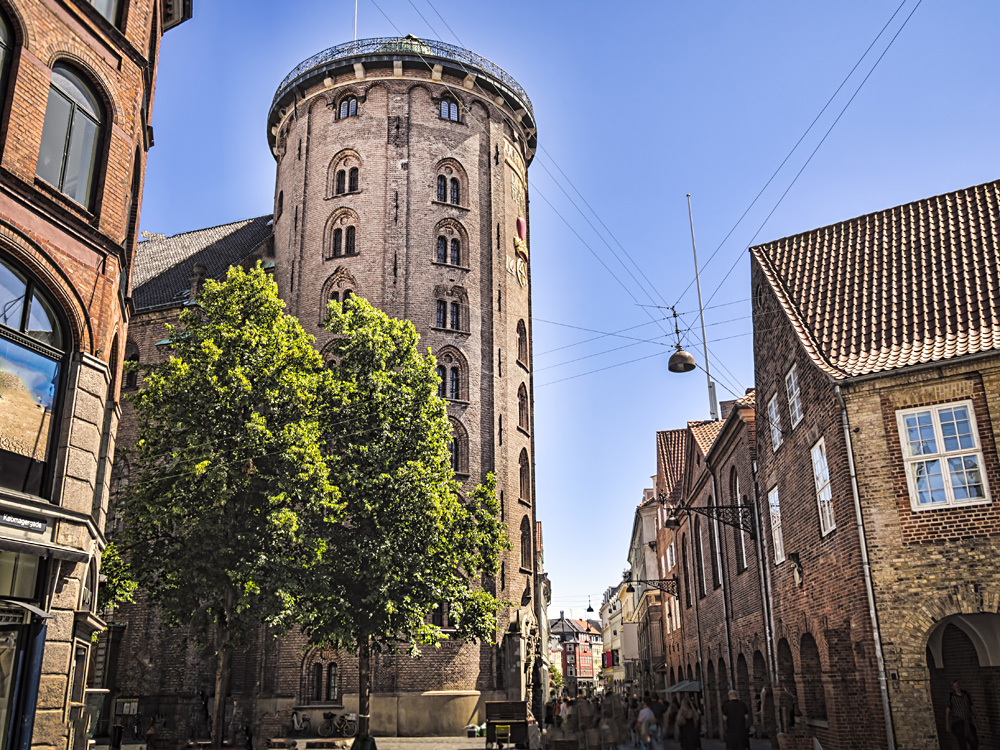
And for Culture…
The Royal Danish Opera House is a 14-storey building with, interestingly enough, 5 of its floors beneath street level. It is located on an island on the opposite side of the harbour from the Amalienborg Palace. This modern edifice is one of the most expensive opera houses ever built. The ceiling in the main auditorium is adorned with 105,000 sheets of 24 carat gold leaf. The orchestra pit is one of the largest in any opera house, with room for 110 musicians. The building provides excellent sound quality for any orchestra. The Royal Danish Theatre was founded in 1748, first serving as the theatre for the king, and then, as the theatre for the country. You can enjoy opera, the Royal Danish Ballet, classical music concerts, and drama, on your Denmark vacation.
The National Museum of Denmark is a must-visit if you are interested in Danish history and culture. It contains exhibitions from the Stone Age, the Viking Age, the Middle Ages, and the Renaissance… up to Modern Danish History. The collections include a sun chariot that is more than 2,000 years old, Romanesque and Gothic church fittings, Danish porcelain and silver, antiquities and coins. The National Gallery of Denmark offers the largest collection of Danish art from the 1700s to the present day, plus works from around the world which include artists such as Rubens, Matisse, and Munch. In fact, it has one of the world’s best Matisse collections. The Carlsberg Glyptotek is an art museum built around the personal collection of Carl Jacobsen (1842–1914), the son of the founder of the Carlsberg Breweries. It is mainly a sculpture museum with items from ancient cultures such as the Romans, the Greeks, and the Egyptians. There are also more modern works including some by Rodin. It is also noted for its collection of paintings by French impressionists as well as by Danish painters. The French Collection includes works by Monet, Pissarro, Renoir, Degas, Cézanne, Van Gogh, Toulouse-Lautrec, and Bonnard. Just outside the city is the Open-Air Museum, one of the oldest and largest open air museums in the world. It spreads across 86 acres of land and incorporates 50 farms, mills, and houses from the period of 1650 to 1940. The intent of the museum is to show the history and look of country life as it used to be. Represented are all the regions of Denmark plus the former Danish provinces that existed in Sweden and Germany.
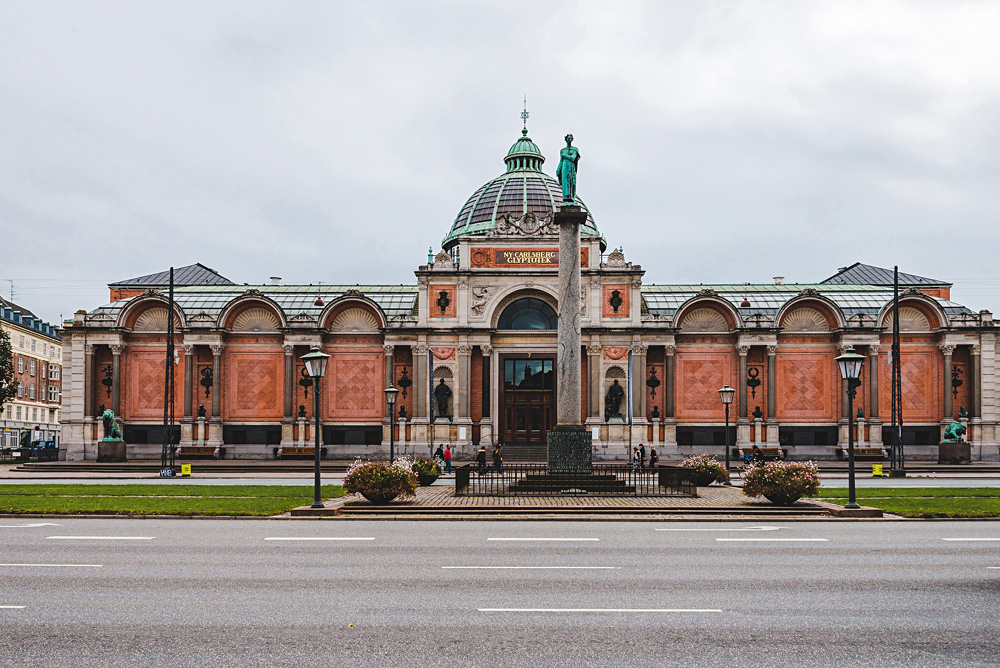
One very unusual and different neighbourhood well worth a visit is Christiana in the district of Christianshavn. I believe it is a place totally unlike any other. Founded in 1971 by squatters and artists as a social experiment, this neighbourhood is an autonomous-free town within Copenhagen. In parts, it is a hippie commune and has its own currency, so I’m told. When you enter Christiana, a sign says, “You Are Now Leaving the European Union,” and when exiting, “You are returning back into the EU.” It even has its own flag. Many of its almost 1000 residents are artisans who try to live as organically as possible. It is full of art galleries, restaurants, cafés, and historic buildings and there are entertaining street murals everywhere. One canal has permanent homes with people living on houseboats. In Christiana, cannabis shops stay open 24 hours per day and although not totally legal, a blind eye is turned. I particularly like the sign which displays the “Nine Laws” of Christiana:
No weapons/No hard drugs/No violence/No private cars/No bikers/No bulletproof clothing/No sale of fireworks/No use of thundersticks/No stolen goods.
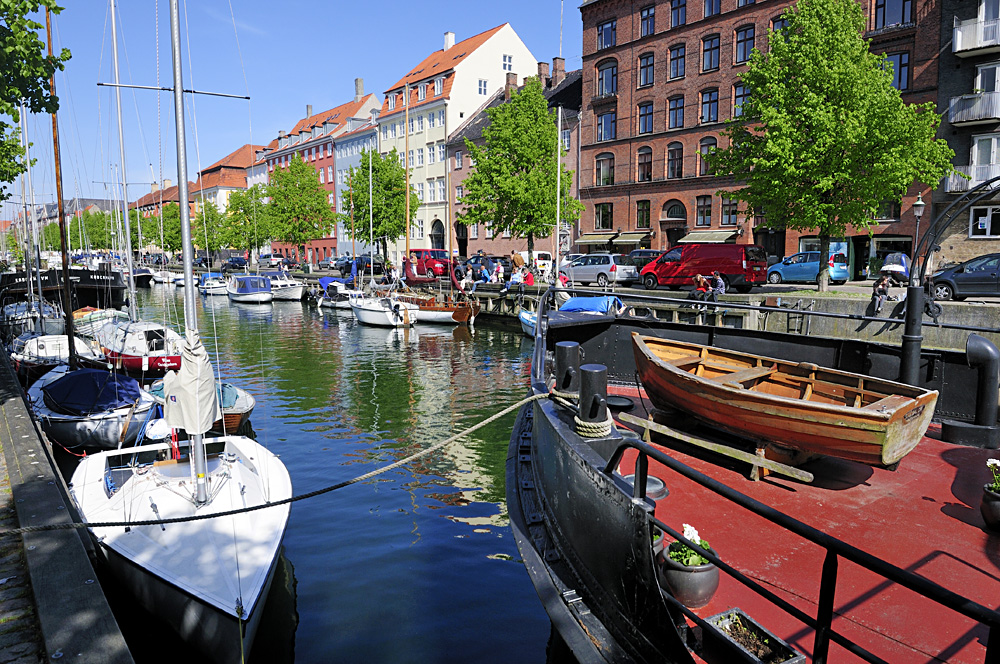
Also in the district of Christianshavn is Our Saviour’s Church (Vor Freisers Kirke), which is a national treasure built in the 1680s. It is a very tall church, reaching a height of 36 metres/117 feet, and because of this, the views of the city from the bell tower, reached by a winding staircase, are excellent.
In the Vicinity of Copenhagen
Your Denmark vacation would not be complete without considering visits to a couple of close by, out of town, castles. Frederiksborg Castle is in nearby Hillerod and easily reached by commuter train. It was originally a royal residence in the 17th century and is situated on three small islands. Today, it is the Danish Museum of National History with the largest collection of portrait paintings in Denmark together with historical and modern paintings. You can also visit the castle’s state rooms as well as the chapel and the audience chamber. It has a large landscaped garden complete with floral beds, canals, and fountains. The other venue is Kronborg Castle in Elsinore, the renaissance-styled castle which was featured in Shakespeare’s play, Hamlet and subsequently becoming famous world-wide. According to most accounts, Shakespeare never actually visited Kronborg, but when you visit it on your Denmark vacation, you can easily picture the play taking place here. You can explore the crypts and catacombs and walk around the precincts of the castle surrounded by considerable fortifications while imagining Hamlet brooding here. Every summer, there are live performances of Shakespeare’s plays
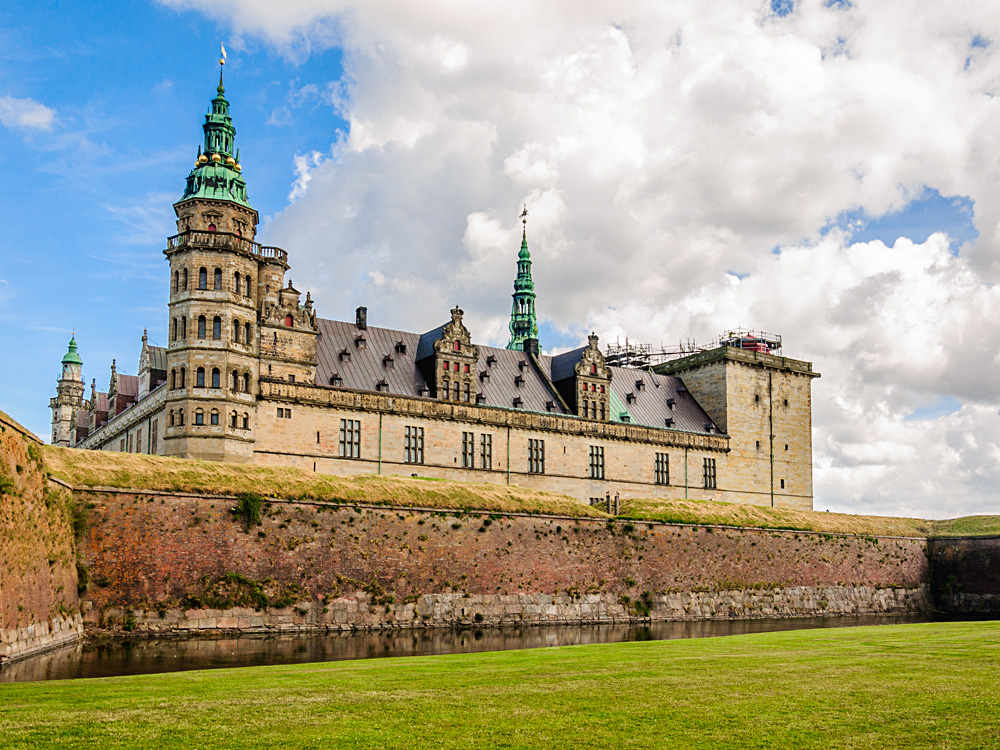
There are many other interesting venues and attractions in Copenhagen, including several very pleasant parks. So, allow sufficient time to take everything in on your Denmark vacation.
Get more travel inspiration by email.
Subscribe
0 Comments

Get the latest travel trends & hear about the best deals on vacations around the world.
If you’re a Globetrotter, these are the newsletters for you!



